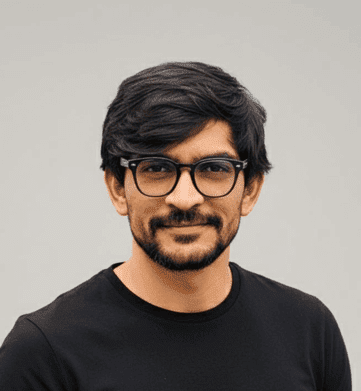Are you too struggling to figure out how to write a lean business plan?
Well, you’re not alone—many entrepreneurs do! A lean business plan is the first document that introduces your business to potential investors or partners.
So, it has to be appealing to persuade potential investors or partners!
Making a plan visually appealing with all the essential information about your business can get overwhelming. Worry not—here is a guide on writing a lean business plan with all the sections and an example.
Thus, don’t wait any longer and dive right in.
What is a Lean Business Plan?
A lean business plan is a short, one-page document that acts as a roadmap for your business.
It focuses on the most important aspects like what your business does, who it is for, what makes it unique, and how it helps you make money.
Unlike traditional business plans that are lengthy and complex, a lean business plan is simple to understand.
It also provides a foundation for creating a more detailed business plan later.
Writing a lean business plan follows a customer-centric approach. So, let’s begin by understanding a lean business plan outline.
Components of a Lean Business Plan
1. Problem
The problem statement talks about what problems your business aims to solve for potential customers.
First, try to understand what top problems are your product or service solving for your target market. Know that your business idea is not viable enough if it isn’t solving any practical problem.
Along with it, mention your customers’ pain points. The most efficient way is to figure out your ideal customer profile first, and then understand their pain points.
Discuss what are the solutions your customers are looking for and how your idea fits in their requirements.
While doing so, try avoiding jargon and any technical terms that will be hard to understand. Also, back your problem statement with evidence and facts instead of assumptions.
Existing alternatives
This is the second part of the problem section. In this section, mention the existing alternatives that are solving your potential customers’ problems.
The businesses solving the same problems are your current competitors. These alternatives are what customers are using or considering as of now.
Understanding these existing alternatives helps you identify how your solution can stand out and provide greater value to customers.
2. Customer segment
The key to writing this chapter is to understand your target market and separate them into various customer groups. Consider demographics, psychographics, and consumer behavior while bifurcating.
To identify target customers, ask yourself the following questions:
- Who are we creating value for in our business model?
- Who are our most important customers?
This way, you will be able to identify your most profitable segments too.
Once you’ve your customers, here are the various components to include in this chapter:
- Types of Customer Segments
- Mass Market
- Niche Market
- Segmented
- Diversified
- Multi-sided platforms/ markets
Creating a customer profile
The customer profile defines the customer segment more clearly for your company by assessing the customer’s pains and gains.
To understand customer pain points better, we can categorize them as follows:
- Undesired outcomes, problems, and characteristics
- Obstacles
- Risks
- Pain severity
Customer Gains: Customer gains are the results or benefits that customers want. Ideally, this is what your product or solution must provide. This is how we can categorize gains:
- Required Gains
- Expected Gains
- Desired Gains
- Unexpected Gains
- Gain relevance
Early Adopters
Early adopters are the customer section that is among the first customers to try out your product or services.
Since they are more in need than others of something to solve their problems, they will forgive the imperfections or flaws of the early releases. This would help you better test and collect the actual feedback for your solutions.

Want to create a Customer Persona in Easy Steps?
Generate valuable customer insights in minutes with Free Customer Persona Generator.
3. Unique Value Proposition
Once you’ve identified your target audience, you should also pinpoint the strengths of your product or service that attract them.
In other words, how would you describe your business to target customers in just ONE sentence (possibly less than 200 characters long)?
A Unique Value Proposition is a sentence that tells why what you do is different from competitors and why that difference matters to customers.
This is a critical parameter in your plan and is hard to get right. It might take years of experience and a lot more market analysis to make that one sentence.
It usually combines:
- The target segment
- The key problem
- The key benefits the customers are going to get after having the product/service.
- The special and unique way you will deliver it
For example, Google’s USP is “Organizing the world’s information and making it universally accessible and useful”.
4. Solution
How would you solve customers’ problems? Outline a possible solution for each problem.
Describe your business idea briefly and in concise sentences that explain what the customer experience is going to be. Make sure you don’t go with the technical words here and keep it all simple.
We have already written a problem chapter. Now match your every solution with its associated problem from the problem chapter. Make a one-to-one association between the problem and the solution, keeping your product offering in mind.
Need help in preparing a lean business plan?
Create an appealing lean business plan using Upmetrics
Plans starting from $14/month

5. Channels
Once you know the solution, it is time to attract customers. List your inbound or outbound marketing strategy to spread your reach: How are you going to acquire your customers?
When your product is ready to solve customers’ problems uniquely, you need to speak loud so customers know that you have the solution for their problems.
Here are examples of some marketing channels: social media, paid online advertising, TV ads, PR, cold calls, Google Ads etc.
List all the possible channels you are going to use for your business, and how will you leverage them to spread the reach.
6. Cost structure
Now, this is one of the most important sections, as your potential investors or business partners will want to know about the costs.
Costs are necessary as they help you to identify how many customers you need to cover your costs.
The accuracy of costs depends on whether you have an existing business or the business is in just the idea stage. If your business is at the idea stage, you will have to make assumptions regarding cost structures.
Write this section last. At an early stage, you don’t even need to write down these numbers. You’ll have more clarity on cost figures once you implement your ideas.
7. Revenue streams
This slide of the lean startup plan template outlines how you will generate income for your business.
Start by listing all the sources of revenue. It could include the way you will charge as in through product sales, service fees, subscription model, or any other mode.
8. Key metrics
Identify the key numbers that indicate your business’s performance: these are the metrics you’ll use to monitor your progress.
Every business, regardless of its industry or size, relies on key performance metrics.
Define the customer actions you’ll track to measure your progress and evaluate your business performance. For example, some of the metrics you can track are:
- Customer acquisition cost (CAC)
- Monthly recurring revenue (MRR)
- Customer churn rate
- Gross profit
- Conversion rate
- Website Traffic
9. Unfair Advantages
The “unfair advantage” is a single, clear, and compelling statement that states why you are different from your competitors and worth paying attention to. Do you have more resources, access to more patents, or better brand recognition?
This section is a little hard to describe. Many entrepreneurs make mistakes while defining this section.
It has to be about something that you already have, which cannot be copied or bought and would require a considerable amount of time for anyone else to build.
To understand your unfair advantage, ask yourself: why do I believe I have more chances to be successful than anyone else in my chosen business vertical?
For example: Tesla’s technological innovation in electric vehicles (EVs) and battery technology is a key unfair advantage. The company’s EVs offer superior performance, range, and charging infrastructure compared to traditional automakers.
Now that we know what all sections to include in a lean business plan, let us go further and see an example.
Lean business plan example
Below is an example of a restaurant lean business plan to have clarity:

Benefits of a Lean Business Plan
A lean business plan is an efficient and condensed business plan to draw investors’ attention to your business in its initial stage.
Some of the advantages of a lean business plan include:
- Simplicity: Only the main elements of a business are focused on a lean business plan, which makes it simple for readers to understand.
- Efficiency: A lean plan writing takes less time and resources than a traditional business plan.
- Actionable insights: It helps you track key metrics and performance indicators at one glance.
The Quickest Way to turn a Business Idea into a Business Plan
Fill-in-the-blanks and automatic financials make it easy.
Conclusion
That’s it for today. We hope you found this lean business plan writing guide helpful. If you are still confused, you can always use a business planning software like Upmetrics, for both your lean and traditional business plan.




